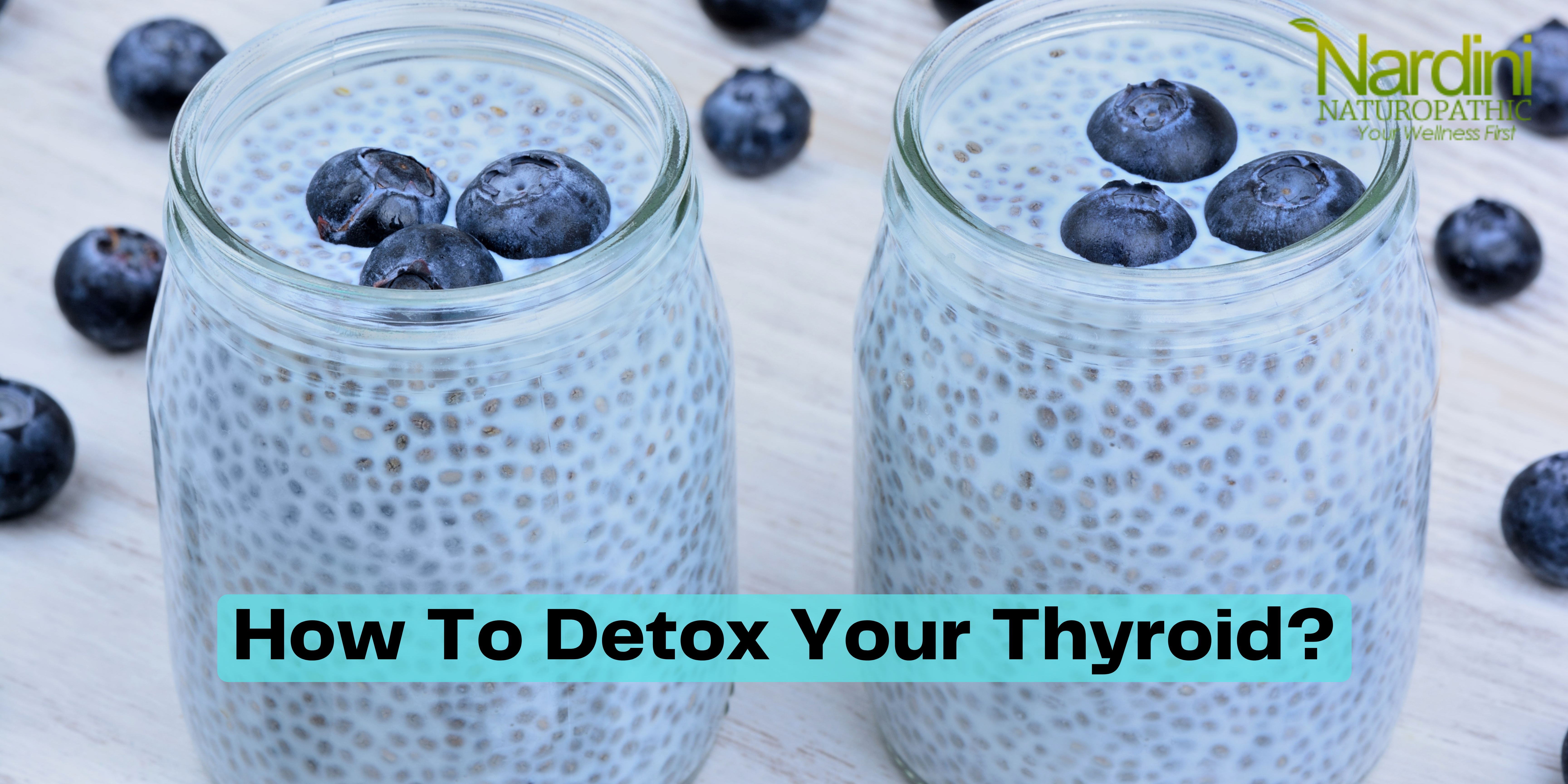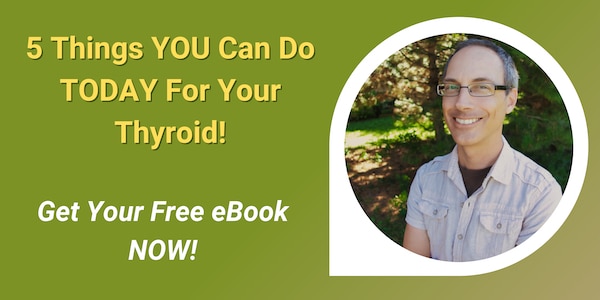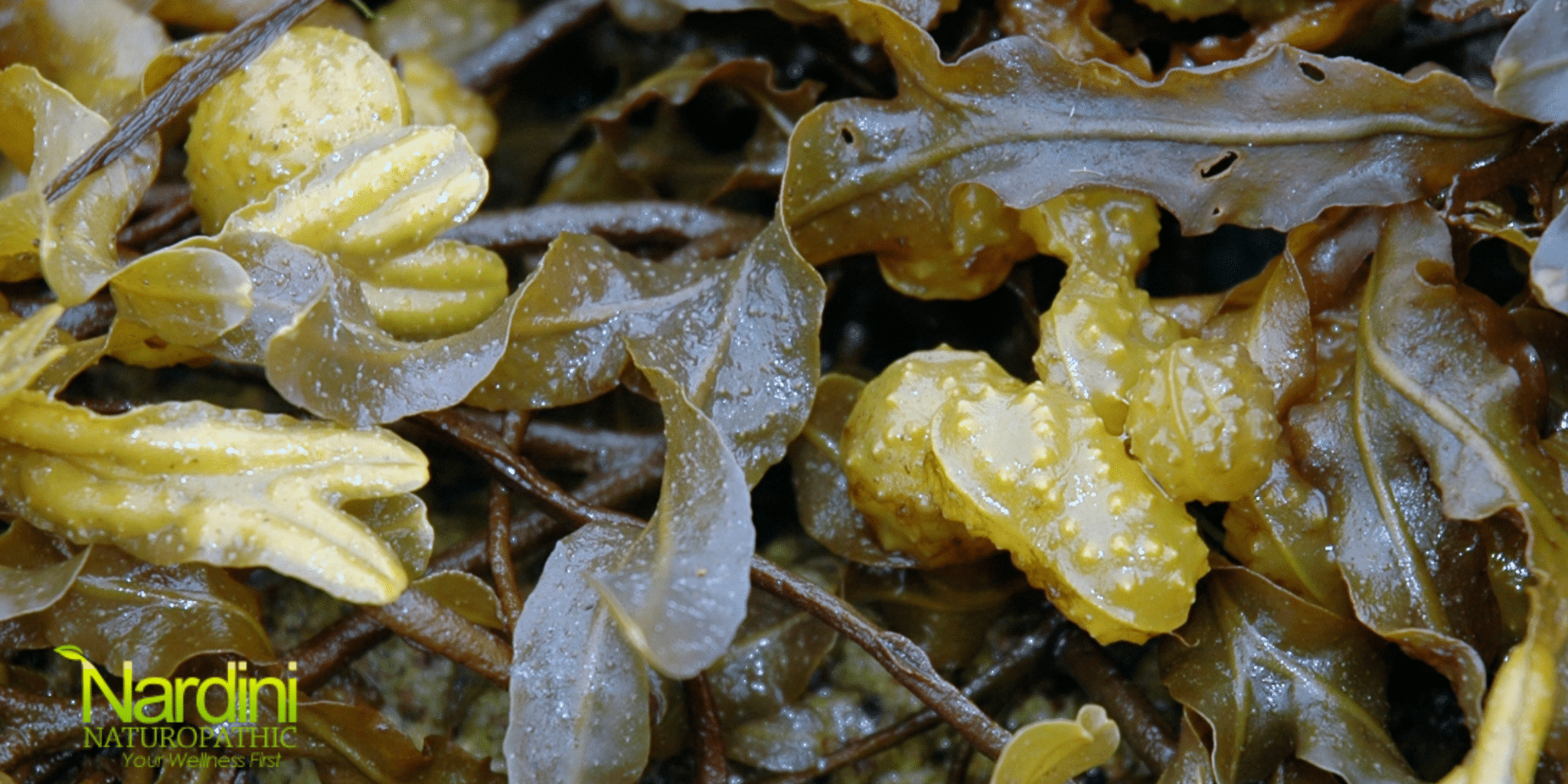The thyroid, like other organs in the body, is susceptible to toxins. Some of these toxins are obvious ones, like mercury, and others…not so much. In my most recent article, I covered some of the most common and harmful toxins that have a particularly negative effect on the thyroid gland and the thyroid system.
The negative effects may include interfering with thyroid hormone production, disrupting thyroid hormone function, causing inflammation in the thyroid, and even causing thyroid cancer. Because these effects are serious, it’s important that we identify our exposure to the toxins and try to minimize it.
Besides limiting exposure, it’s just as important to remove the toxins that are already present and deal with the adverse effects of the toxins on the thyroid system.
In today’s article, I would like to get into some of the ways to detoxify the thyroid and restore nutrients that can help to rebalance the thyroid system.
Keys to Thyroid Detox
“Detox” can mean different things. It can mean a recovery from an acute poisoning, like with alcohol, for example. It can also refer to removal of built-up toxins from chronic exposure.
This may also require repair of systems that have been damaged by the long-term exposure. Sometimes, short-term exposure to toxins can have long-term consequences for the body.
Here, I will cover some of the most important goals to accomplish when undergoing a detoxification program, with specific focus on detoxing the thyroid.
- Eliminate Heavy Metals
- Eliminate Halogens
- Support the Organs of Detoxification
- Promote Antioxidant Activity
- Establish a Detox Routine
1. Eliminate Heavy Metals
Evidence shows that toxic metals, like mercury, lead, cadmium, arsenic, and aluminum can have harmful effects on the thyroid gland and the thyroid system1. These metals can accumulate in the body with chronic exposure, requiring active efforts to remove them.
The best way to detoxify toxic metals from the body is through a process called chelation. Metals are present in the body as ions, that is, they carry an electric charge and always a positive one. The method of chelation makes use of negatively charged ions to attach to the metals and, essentially, pull them out of the body. Some commonly used pharmaceutical chelating agents are EDTA, DMSA, DMPS, and TTFD2.
There are also many natural remedies that can act as toxic metal chelators. Cilantro, chlorella, and garlic contain natural compounds that bind metals and remove them from the body3. Other natural chelators include alpha lipoic acid (ALA), ascorbic acid (Vitamin C), N-acetyl cysteine (NAC), and alginate.
The most common ways of administering chelating agents, whether pharmaceutical or natural, are intravenously and orally. Not all chelators are effective orally, so intravenous administration is necessary in some cases.
With any method of chelation, it is very important to do it only under supervision of a health professional. The chelating agents don’t just remove toxic heavy metals. They can also strip out essential minerals that are likewise positively charged, including calcium, magnesium, zinc, copper, selenium, and iron. It is critical to replace these minerals and monitor their levels as needed.
2. Eliminate Halogens
Thyroid hormones require iodine to perform their vital metabolic function. Iodine shares a column in the periodic table with three other elements – fluorine, bromine, and chlorine. Together, they are referred to as halogens.
This means that these other halogens are similar enough to iodine that they can take its place at iodine receptor sites, preventing it from performing its function for the thyroid and other tissues of the body.
However, we can use this similarity in chemistry among the halogens to our advantage. The most efficient way to remove fluorine, bromine, and chlorine from the body is by supplementing with iodine.
The extra iodine forces the other halogens out from where they have accumulated in the body, allowing them to get flushed by the liver and kidneys4. Because iodine can boost thyroid function, it can improve the function of these two organs of detoxification, speeding up the detox process.
A simple way to supplement with iodine is through the diet. Sea veggies like kelp, dulse, seaweeds, and algae are relatively high in iodine. Eggs and liver also contain iodine. For more serious halogen toxicity, it may be necessary to take an iodine supplement.
Iodine comes in low doses, often in the form of potassium iodide, and in higher doses as Lugol’s solution or similar preparations. High dose iodine should be used with the guidance of a qualified practitioner as over-supplementation can sometimes aggravate certain thyroid conditions, like Hashimoto’s Thyroiditis.
The halogens are present in many consumer products, food additives, pesticides, industrial waste, and medications. Because they are so widely distributed and exposure to them can be chronic, it may be necessary to detox from halogens on a regular or ongoing basis.
3. Support the Organs of Detoxification
The key to any successful detox is promoting the optimal function of the organs of detoxification. These organs include the liver, kidneys, lymphatic system, glymphatic system (lymphatic system of the brain), and the colon. Secondary detox organs include the skin and airways.
The liver is at the top of the “detox pyramid” since it handles the disposal of environmental toxins as well as toxic metabolites and excess hormones that get produced by ongoing bodily processes.
Certain herbal medicines, like burdock root, dandelion root, artichoke, and turmeric can boost liver detox action and milk thistle is helpful for protecting the liver itself from harmful toxins. Broccoli, kale, cabbage, and Brussels sprouts are excellent sources of sulfur-containing compounds which help the liver process the toxins so they can be properly removed from the body.
The kidneys take water soluble toxins and flush them out through the urine. Getting plenty of water is vital to this process, of course. Dandelion leaf, parsley, nettle, and juniper berries are diuretic herbs that help move fluid through the kidneys. Hawthorn can help protect the small blood vessels of the kidneys from damage, helping them to better perform their detox function.
The lymphatic system is a group of vessels that are situated outside of the circulatory system. It functions to transport dietary fat to the liver, house cells of the immune system, and return fluid from the tissues of the body back to the circulatory system. This latter function serves to get toxins from the tissues, including the thyroid gland, back into the circulation so they can be processed by the liver and kidneys.
Movement, breathing, exercise, and healthy sleep are essential to a functioning lymphatic/glymphatic system. Echinacea and cleavers are two herbal medicines that are helpful to promote lymphatic flow.
The colon is the place where the toxins processed by the liver end up. If the bowels are not moving regularly, the toxins can get re-absorbed into the circulation where they can cause more damage. It is crucial to get the toxins out with the stool before this happens.
Drinking plenty of water is critical and fibre intake, in the form of ground chia and ground flax seed, as examples, can be helpful in keeping the bowels moving and getting the toxins out.
The skin and airways can aid the detox process but can become overwhelmed with inflammation if their burden of toxins is too high. Think of eczema and asthma as examples of the detoxification system being unable to keep up and sending the excess toxins to the skin and lungs, respectively. Supporting the main organs of detoxification to do their job will prevent these secondary organs from being overloaded.
4. Promote Antioxidant Activity
One of the primary ways that toxins cause damage to the thyroid gland and other organs of the body is through a process called oxidative stress. Heavy metals, pesticides, medications, and other toxins can generate “reactive oxygen species” (ROS). These chemicals contain oxygen and can react with components of the cells, damaging them5.
The body has a plan to minimize this damage, though – by making antioxidants, compounds that neutralize the ROS. Some of the main antioxidants in the body are enzymes such as superoxide dismutase, catalase, and glutathione peroxidase. They rely on nutrient minerals, such as zinc, copper, and manganese. The antioxidant glutathione requires L-cysteine, an amino acid found in beef, poultry, and eggs.
Antioxidants found in fruits (blueberries, goji berries), herbs (oregano, basil), and spices (clove, cinnamon, turmeric) help boost the body’s built-in antioxidant system. Naturally occurring Vitamin C is another example of a powerful natural antioxidant.
Certain supplements, like NAC (see heavy metal detox above), selenium, alpha lipoic acid, and Vitamin C can be used to help boost the body’s glutathione and optimize the function of the antioxidant enzymes.
Whenever doing a detox, toxins get released from long-term storage, giving them the potential to do damage on the way out. Antioxidants help to minimize this damage. Therefore, it’s important to consider antioxidant support with any detox program.
5. Establish a Detox Routine
Detoxification is not a one-and-done affair. Although exposure to the many toxins may be minimized, it cannot be eliminated entirely. For this reason, once much of the thyroid’s (and the body’s) accumulated toxins have been removed by some of the measures mentioned earlier, it is vital to maintain a detox routine to prevent further toxic build-up.
Seasonal detox is a popular concept that involves short detox programs when the seasons change. This can be done 4 times per year at the seasonal transitions or twice per year during spring and fall. The detox can be tailored to the particular season. For example, it’s common to use lemon water for a cooling effect in the warmer months and ginger tea to warm in the cooler months.
I can’t stress enough the importance of daily detox. Our bodies are treated to a constant influx of toxins that we can only reduce but not eliminate exposure to. So, it’s necessary to promote their elimination every day.
The lemon water and/or ginger tea I mentioned above can be done once per day all year. Fruits and vegetables with herbs and spices are a great way to keep up a steady supply of antioxidants and nutrients needed for the detox process. And daily fibre, in the form of ground flax seed, chia seed, or psyllium husks, is crucial for getting the toxins out.
Fasting, using juice, lemonade, or even water, is sometimes used by itself or with other detox methods to facilitate the detoxification process. Some use intermittent fasting (fasting for 12-18 hours overnight) on a daily or weekly basis to promote toxin removal. Fasting of 2-3 days in length may be appropriate for seasonal detox. If you’re taking medication or plan to fast for longer than that, check with a qualified health practitioner beforehand.
Final Thoughts on Thyroid Detox
Like many organs in the body, the thyroid gland is susceptible to damage from a variety of toxins. As I mentioned, the first thing to do is reduce your exposure from consumer products, food additives, pesticides, electromagnetic frequencies, and unnecessary pharmaceutical products.
When the thyroid does become overburdened with toxicity, there are many specific ways to help flush them out. General body detoxification should also not be overlooked as this can only help the thyroid system.
I certainly haven’t mentioned every possible method of detox and there are more than I can get into here. Not every detox program is for everyone. It will depend on your state of health and your ability to incorporate changes into your lifestyle. Working with a practitioner, who is familiar with detox and who can help guide you through the process, may be beneficial.
Remember that detox can speed up the elimination of medications from the system. If you are on any prescription medication, check with your prescribing doctor before embarking on a detoxification program.
If you think your thyroid needs a detox, now may be the time!
1. https://www.ncbi.nlm.nih.gov/pmc/articles/PMC3569681/
2. https://en.wikipedia.org/wiki/Chelation_therapy
3. https://www.ncbi.nlm.nih.gov/pmc/articles/PMC3654245/
4. https://www.naturallifeenergy.com/files/Iodine-removes-fluoride.pdf
5. https://en.wikipedia.org/wiki/Reactive_oxygen_species
Book An Appointment With Nardini Naturopathic
Are you concerned that your thyroid may need a detox and would like some guidance?
Or perhaps you’d like a review of your overall diet to see where you could be doing better.
Maybe you have food allergies or intolerances and worry you aren’t getting enough nutrients because of your restricted diet.
I’m Dr. Pat Nardini, a naturopathic doctor who offers nutritional counseling services to help ensure all of those gaps in your diet are filled, and that you’re getting enough of all the important nutrients which your body needs to function at its best.
Contact me today for more information, or book a free 15-minute consultation where I will help you understand how naturopathic medicine can help you.
If you have questions about naturopathic medicine, or you’d like to take your first step into the world of naturopathy, contact us at Nardini Naturopathic, and let’s book an appointment.
Yours in health,
Dr. Pat Nardini, Naturopathic Doctor
320 Danforth Ave suite 206,
Toronto, ON, M4K 1N8
-https://g.page/NardiniNaturopathicDanforth
Dr. Pat Nardini, ND is a licensed doctor of naturopathic medicine in Toronto, Ontario. He offers science based natural health solutions with a special focus on thyroid conditions.


